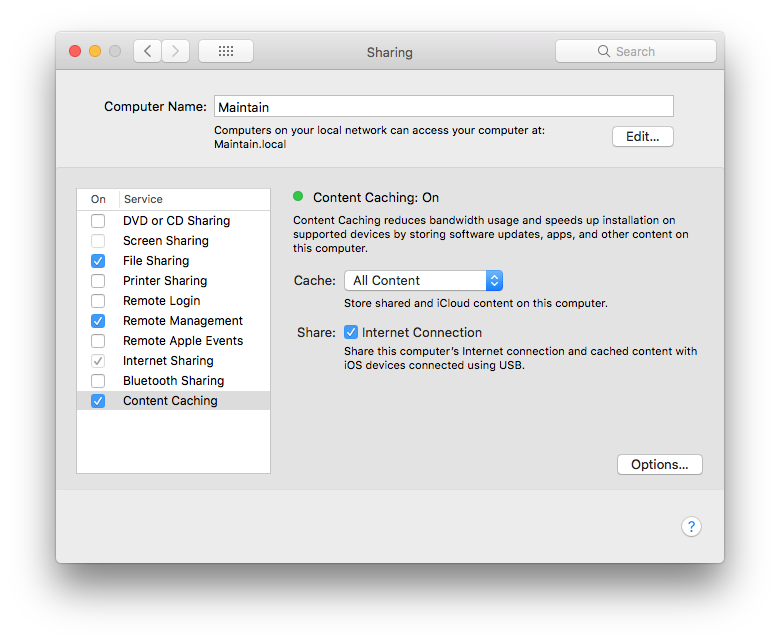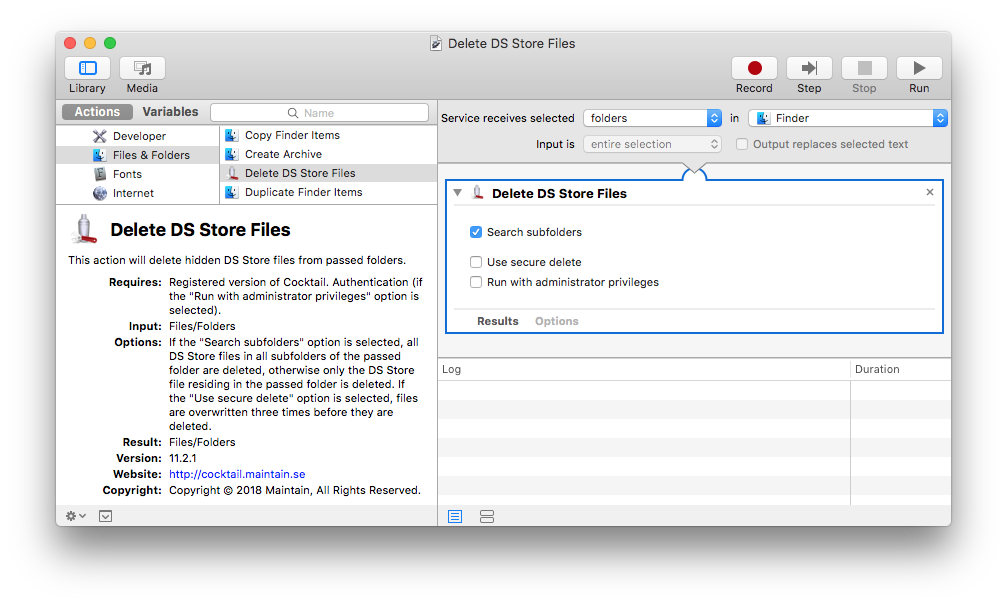Here are three useful tips that will ensure you do not face this issue on your Mac.
Add a password hint
After you add a password hint, it shows up on the screen if you enter the incorrect password a few times. You can see that hint and instantly recall what your Mac’s login password is.
A hint should be there to help you refresh your memory. Do not put your exact password or make it too obvious that others around you can guess it.
You can add the hint when you’re creating or changing your Mac’s user account password. Here’s what to do if you’d like to add one now:
• Go to Apple menu > System Settings... > Users & Groups
• Click the info icon (i) next to the desired account
• Click Change... next to Password
• Create a new password and add the hint on this screen
• Lastly, click Change Password
Once the hint is added, go to System Settings > Lock Screen and turn on the switch for “Show password hints”.
Show a Lock Screen message
The Lock Screen message is not for adding password hints but rather for displaying a welcome message. You can for example add your email address/phone number so someone who finds your misplaced Mac can contact you and return it.
However, if you do not want to change your current Mac password – a requisite for adding password hint if you don’t have already – then you can rely on the Lock Screen message feature to add a hint. But again, don’t make it obvious.
• Launch Cocktail (https://www.maintain.se/cocktail)
• Click the Interface toolbar button
• Go to the Login tab
• Enter your message into the "Display additional message" text field
• Click Apply
Allow Apple ID to reset Mac’s password
This is an extremely important step that will be helpful if you’ve forgotten your password and can’t figure it out even after looking at the hint.
Go to System Settings > Users & Groups and click the info icon (i) next to an account. Now, turn the switch for “Allow user to reset password using Apple Account”
From now on, you can use your Apple ID and password to reset your Mac’s forgotten account password.

If you are looking for previous editions of Cocktail, here are the download links to releases that are compatible with all Mac OS X, OS X and macOS versions from Mac OS X 10.5 to macOS 13.
Cocktail (Ventura Edition) for macOS 13
https://www.maintain.se/downloads/Cocktail16VE.dmg
Cocktail (Monterey Edition) for macOS 12
https://www.maintain.se/downloads/Cocktail15ME.dmg
Cocktail (Big Sur Edition) for macOS 11
https://www.maintain.se/downloads/Cocktail14BSE.dmg
Cocktail (Catalina Edition) for macOS 10.15
https://www.maintain.se/downloads/Cocktail13CE.dmg
Cocktail (Mojave Edition) for macOS 10.14
https://www.maintain.se/downloads/Cocktail12ME.dmg
Cocktail (High Sierra Edition) for macOS 10.13
https://www.maintain.se/downloads/Cocktail11HSE.dmg
Cocktail (Sierra Edition) for macOS 10.12
https://www.maintain.se/downloads/Cocktail10SE.dmg
Cocktail (El Capitan Edition) for OS X 10.11
https://www.maintain.se/downloads/Cocktail9ECE.dmg
Cocktail (Yosemite Edition) for OS X 10.10
https://www.maintain.se/downloads/Cocktail8YE.dmg
Cocktail (Mavericks Edition) for OS X 10.9
https://www.maintain.se/downloads/CocktailME.dmg
Cocktail (Mountain Lion Edition) for OS X 10.8
https://www.maintain.se/downloads/CocktailMLE.dmg
Cocktail (Lion Edition) for Mac OS X 10.7
https://www.maintain.se/downloads/CocktailLionEdition.dmg
Cocktail (Snow Leopard Edition) for Mac OS X 10.6
https://www.maintain.se/downloads/CocktailSLE.dmg
Cocktail (Leopard Edition) for Mac OS X 10.5
https://www.maintain.se/downloads/CocktailLE.dmg
Cocktail (Tahoe Edition) for macOS 26
Cocktail (Sequoia Edition) for macOS 15
Cocktail (Sonoma Edition) for macOS 14
https://www.maintain.se/cocktail
Content caching is a new feature available in macOS High Sierra. Content caching reduces bandwidth usage and speeds up installation on supported devices by storing software updates, apps, and other content on local computer.
Content caching is a great idea, especially if you have an always-on (or often-on) Mac in your home or office. Instead of having to download the same stuff over and over, you only do it once. Then, any other devices on your network pull their data from your Mac, instead of from Apple's servers. That's probably a boon for Apple's data bills, but for us it could make a huge difference to update speeds. When this feature is switched on, both Mac and iOS content is saved locally.
How to set up content caching in macOS High Sierra?
• Open Sharing from System Preferences.
• Unlock the pane. Click the padlock icon in the lower-left and authenticate.
• Configure the Content Caching service.
Shared content: store apps and software updates.
iCloud content: store iCloud data, such as photos and documents.
Share Internet connection: share this computer's Internet connection and cached content with iOS devices connected using USB.
• Switch it on. Click the checkbox on the left of the service name to enable it.
Keep in mind that content caching will download all content requested by any client device, so the service will consume vast quantities of storage space unless you limit the storage. You can inspect how much storage space is being used on your Mac by the caching service by clicking the Options button. You can also use Cocktail (Preferences > Caches > System > Content caches) to flush/clear content caches.

One of Cocktail’s most useful features is the built in Pilot you can use to schedule optimizations of your computer. But that’s not all, Cocktail also lets you use Apple’s Automator to build your own workflows that can be more flexible and a great complement to the Pilot.
First, let’s get to know Automator, Apple’s excellent automation tool. Automator let’s you build workflows in a “Lego” fashion using simple actions, which you can chain together to create really complex applications without having to learn how to code. For example you can use it to resize, rename and upload pictures to your blog or to automatically sort files using Folder Actions. In this example we’re going to do something relatively simple to show how easy it is to interact with Cocktail and other applications to create fast and powerful workflows.
First, a little bit of background knowledge about what we are trying to do. Have you ever used a USB drive with macOS, then plugged it into a Windows computer only to find a bunch of .DS_Store files? macOS creates these files and uses them to keep track of the folder icon, background and other things. Normally they are hidden from the user, however, when you plug the USB drive into a Windows computer they show up since Windows doesn’t understand what a DS Store file is. This can very quickly get very messy and confusing, so let’s use Cocktail to clean it up!
What we are going to do is create a service for Finder. Services allows you to expand the functionality of Finder and virtually every other application in macOS using Automator. In this case it will add an option to the menu when you right click a folder that lets you clean up all the DS Store files inside.
To do this, open Automator (in Applications) and when it asks you for what type of workflow you want to create, select Service. Automator will create a template for a workflow which can receive a number of different inputs from applications and lets you process these. In this case we want to deal with folders in Finder so make sure it says “Service receives selected folders in Finder” in the top of the right hand pane.
On the left side of the Automator window you have the library which contains the building blocks for the workflows. We definitely recommend that you explore these actions when you have time but for now lets carry on with our example. Select the Files & Folders category in the Library, then drag the “Delete DS Store Files” action into the workflow area on the right. When you drag it into the workflow area a few more options will appear, in this case we’d like it to search the subfolders on the drive too so make sure you tick the checkbox. When you’re done, save the service and name it “Delete DS Store Files”.
Voila, we’re done! Plug in a USB drive, then right click it and select Delete DS Store Files from the menu. Now go to a Windows computer and magically your USB drive will be a little cleaner! This works on any folder or drive so if you are emailing a folder to a friend who’s using Windows, you can clean it up the same way.
Automator lets you do much more than this, for example you can make your own maintenance scripts which you can run whenever you want by saving them as small applications (just select Application instead of Service when you create a new workflow).

Apple’s Mail application is one of the best email clients around for OS X. Why is it so good? Well, it is free, comes with every Mac and supports almost all types of email accounts! That said, it can always be improved a little. In particular you might notice that it slows down over time, especially if you have large mailboxes and lots of contacts so let’s have a look at how we can speed it up a bit.
The first, and most obvious thing, is to slim down your mailboxes a bit. Create a new folder in Mail and move all your old emails into that folder (or use the Archive function if you have a Gmail account. This way Mail only has to load the most recent emails when it launches and instead of having to synchronise a list of over 20 000 emails with the server it only has to deal with 500 or so, saving your precious bandwidth if you are on a mobile connection.
It is also a good idea to rebuild Mail’s Envelope Index now and then. Mail application uses the (SQLite) Envelope Index database to index and search messages. By rebuilding this database, issues concerning messages that appear incomplete or are missing can be corrected. This feature may also improve Mail's performance. Just launch Cocktail, go to System > Databases and click on the Rebuild button.
You can also use Cocktail to clear Mail downloads. When you receive attachments to e-mail messages, the files are stored with your messages at first. But if you double-click an attachment to view it, Mail stores a copy in a folder on your hard drive. You may have dozens of files there occupying a huge amount of space. You can generally delete these without worry. If you still have the original messages, the attachments are part of those messages. All you have to do is to make sure that the “Mail downloads” option in Cocktail > Preferences > Caches > Internet is enabled next time you use Cocktail to clear Internet caches.
Another housekeeping tip is to clean your previous recipients list. Mail stores a list of everyone you’ve ever sent a message to so that it can suggest their email addresses when you are writing a new email. The problem is that many of these recipients are people you only emailed once, or addresses which have changed so the list can become full of out of date and irrelevant addresses. Select Previous Recipients from the Window menu in Mail to clean up the list.
Finally, if you are using Mail to read RSS feeds it might be a good idea to go through your subscriptions and deleting the ones you no longer read as Mail essentially treats an RSS subscription as a mailbox. This means that as the number of posts increases Mail will slow down, so keep an eye on your feeds!


